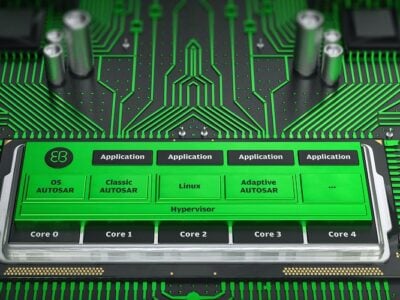
First live 5G network in Europe
What so far has only worked under complex laboratory conditions is now being tested as a live environment in a city. Deutsche Telekom expects to have standardized the 5G technology by 2020 so that it can be rolled out commercially.
5G users benefit from high transfer rates, flexible configuration options and low latency, particularly for applications running on the Internet of Things. “In the first place, the manufacturing industry will benefit from 5G as a powerful enabler for a large number of applications,” says Claudia Nemat, responsible for Technology & Innovation in Deutsche Telekom’s Board of Management.
In the network in Berlin, users can experience the first 5G application ideas, including Augmented Reality (AR) and Virtual Reality (VR) applications. These applications benefit from the ability to transport large amounts of data, exchange information in real time, and the high reliability of 5G. Another example application is the streaming of ultra-high resolution video data over 5G NR.
The upcoming telecommunications standard 5G will combine mobile and fixed network. The network architecture will also play a major role, as 5G networks will be managed in a software-controlled, programmable and holistic manner. With such features, 5G networks will form the basis for offering many different services. It is planned to combine the upcoming radio standard of 5G, New Radio, with the existing 4G/LTE infrastrurtcure.
In order to further increase the capacity and data rates at 5G NR, the use of the latest Massive MIMO antenna technology is a key. Massive MIMO greatly increases the number of transmit and receive antennas, which makes it possible to use the frequency spectrum much more efficiently. The network in Berlin uses the frequency spectrum at 3.7 GHz. The equipment for the four base stations has been provided by Huawei.
Although the 5G pre-standard used in Berlin will probably not be included in the final standard version, Deutsche Telekom’s specifications are “very closely” aligned with the current global 3GPP draft for 5G New Radio, the company says. The final specifications of the system used are expected to be officially published by 3GPP in December 2017.
One of the applications in the 5G network is a model car racetrack as a VR representation. This example illustrates just how important it is to equip head mounted displays (HMD) with technology for direct network and cloud connection. In the version at hand, the individual micro-services of the application are still running in the HMD, making them heavy and leading to high power consumption. With 5G and Edge Computing, the data could be seamlessly transferred from the cloud to glasses. Thus, the data goggles would look like a normal pair of glasses and weigh considerably less than today’s headsets.
 If you enjoyed this article, you will like the following ones: don't miss them by subscribing to :
eeNews on Google News
If you enjoyed this article, you will like the following ones: don't miss them by subscribing to :
eeNews on Google News




